Types of cooker: Choosing the right model for your kitchen
Understanding the various types of cooker available will mean you can make the right decision when selecting one that suits your kitchen and your lifestyle — here's everything you need to know

There are so many types of cooker available these days that knowing how to choose the right model can seem quite overwhelming. Luckily for you, our guide is here to simplify things so that you can start shopping around feeling confident of the model and design that will best suit your needs.
Kitchen design is made up of many elements, from layouts that make the best use of your space to materials that cut down on maintenence. Of course your kitchen appliances play a huge role in how well your kitchen performs too, as well as contributing to the look of the room — and the cooker is, perhaps, the most important of all your appliances.
Here, we'll be taking a look at all the options you are likely to be faced with when buying a new cooker, from the various fuel types on offer to the newest innovations now making an appearance.
What are the main types of cooker?
One of the reasons why looking into types of cooker can be so confusing is that they can be split into so many different categories, including fuel type, configurations and how they are installed into the kitchen.
In order to simplify things, we have separated these out so you can take a look at each on their own.
Gas, electric or dual fuel?
When buying a new cooker you will be faced with three main fuel options: gas, electric or dual fuel. The one you choose will need to be based on the fuel source at your home as well as how you like to cook.
Gas cookers: Gas cookers, where the hob and ovens are both powered by gas, are less common than they once were. Gas hobs are still very much the preferred option for many people however, offering instant, highly controllable heat. On the downside, gas hobs can be a little trickier to clean after spills than ceramic or induction.
Like gas hobs, gas ovens heat up really quickly, but getting an even heat within the cavity can be tricky as they won't usually include fans. This means the top of the oven often gets hotter than the bottom.
Finally, if you decide to opt for a gas cooker (or dual fuel for that matter) you will need a qualified professional, accredited by the Gas Safe Register, to install it.
Electric cookers: Ideal for those living in areas without a gas connection, electric cookers have a lot going for them. Although ovens can take little longer to heat up than gas, the heat distribution within them tends to be better, thanks to the fans now usually incorporated to move air around.
In terms of hobs, traditional ceramic hobs can be frustratingly slow to respond to heat adjustments and take time to heat up and cool down. However, opt for an induction hob and these issues disappear — they heat up and cool down instantly. Be aware, however, that if you are switching to an induction hob, you will need pans with ferrous metal bases.
Dual fuel cookers: Dual fuel is a common option for those choosing a range style cooker. They combine a gas hob with electric ovens, offering instant heat up top and a more even cooking heat in the oven cavities below.
"Dual fuel is generally the preferred option for those looking to invest in a range cooker," say the experts at Smeg. "This option is particularly advantageous as people can enjoy a gas-powered hob, whilst benefitting from the precise temperature control of electricity to heat the oven."
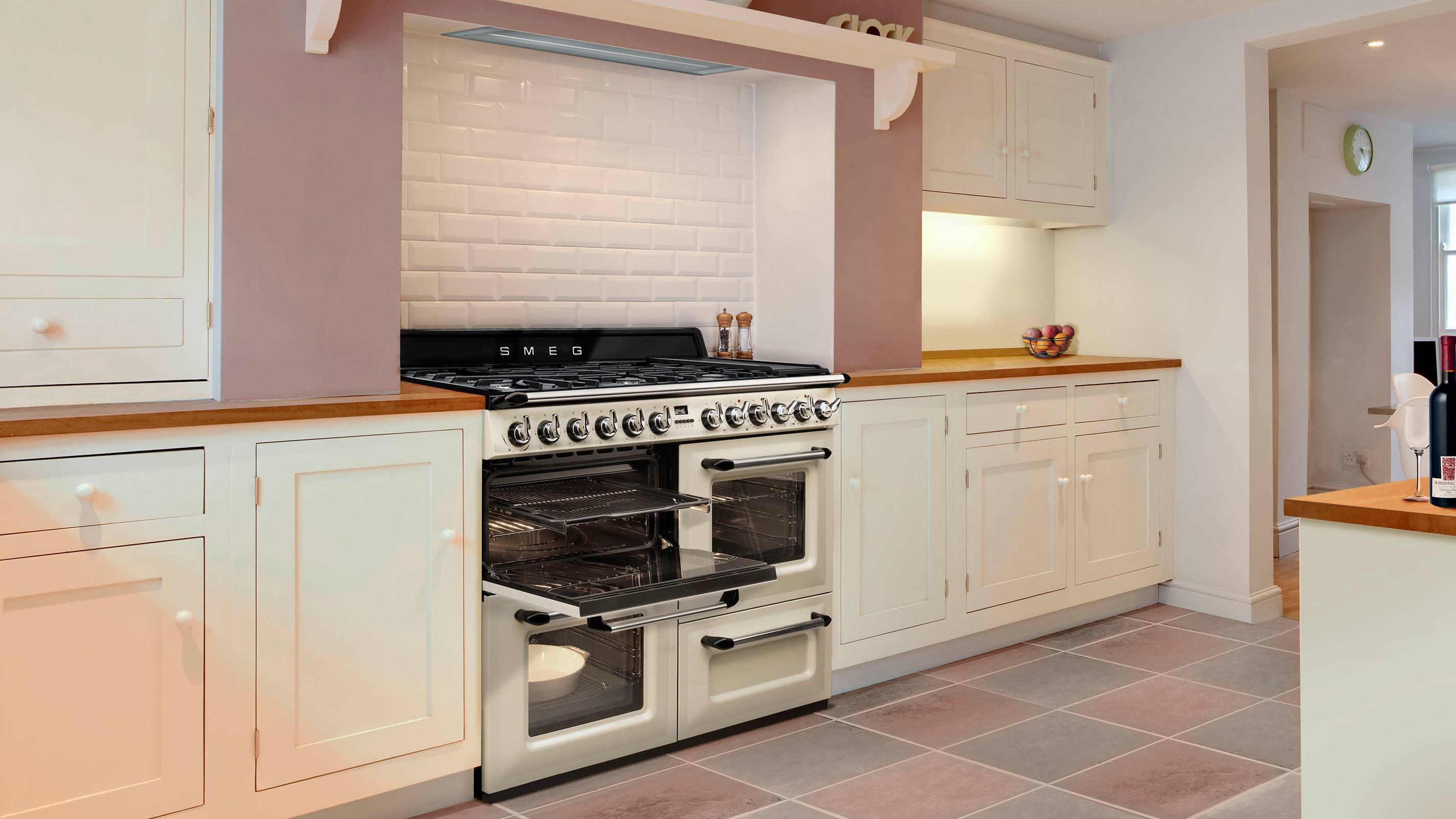
What is the difference between a cooker and an oven?
It might be obvious to some, but it is still worth explaining the difference between a cooker and an oven.
The term cooker is most often used to describe an all-in-one appliance that combines a hob with ovens below. They are most commonly freestanding.
Ovens, on the other hand, are usually built-in (beneath the worktop or at eye-level within a run of kitchen units) and don't incorporate a hob — you will need to purchase this separately.
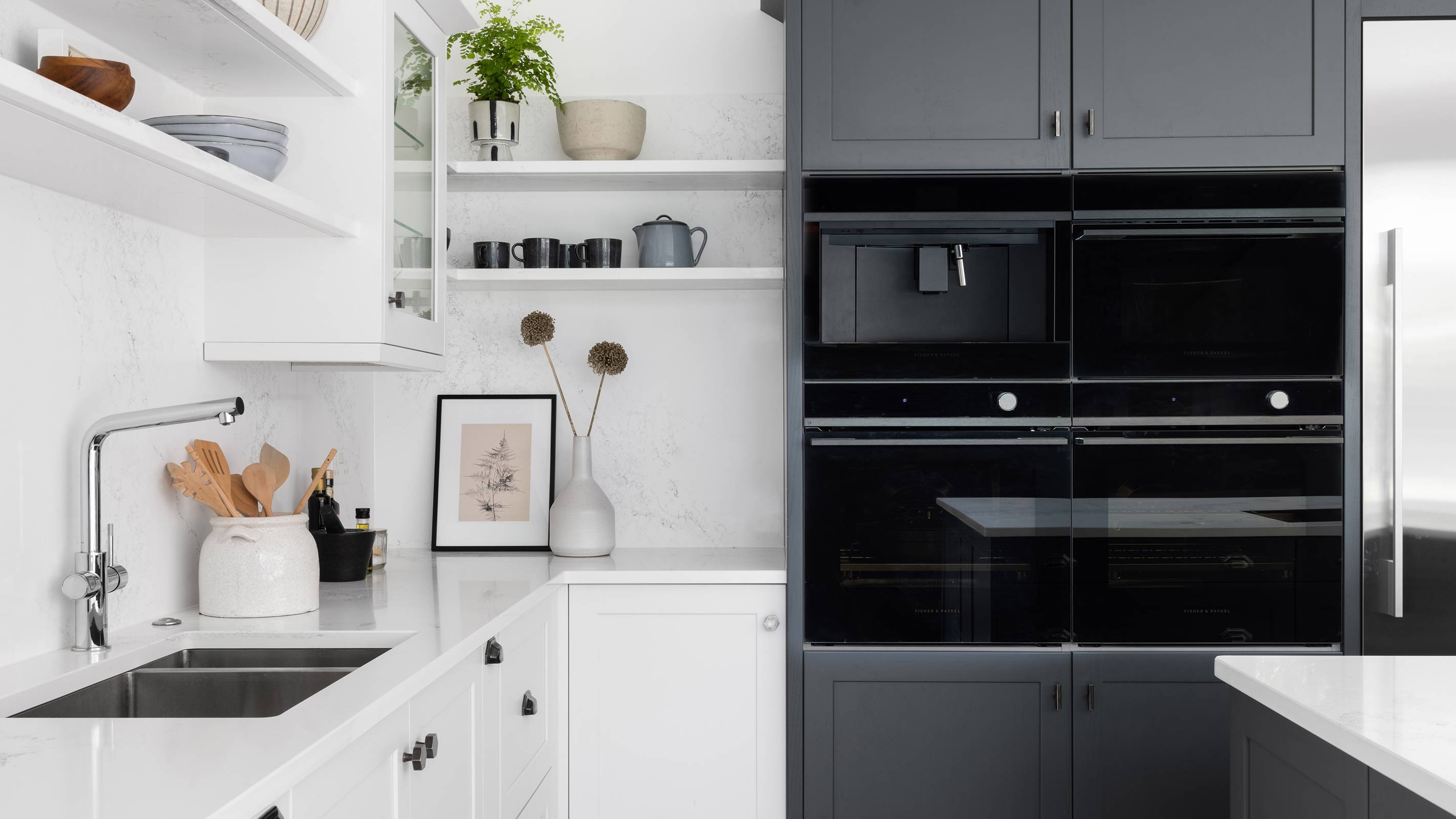
Should I choose a double or single oven?
The next decision you need to make is whether you need a single or double oven. This will, in part, come down to your cooking habits. If you rarely cook and live alone or in a smaller household, a single oven may be all that you need. This is also an option commonly favoured by those after small kitchen ideas.
However, if you are kitting out a family kitchen, love to cook and entertain then a single oven might not hit the mark — in this case a double or even triple oven will be a far better choice.
Single ovens usually have an oven and grill in the same cavity, while double ovens commonly include one main oven and a separate oven/grill on the top.
Of course, if you are going for built-in ovens and have the space, you could opt to install a run of two or more single ovens alongside one another — a sleek, contemporary idea that is particularly popular right now.
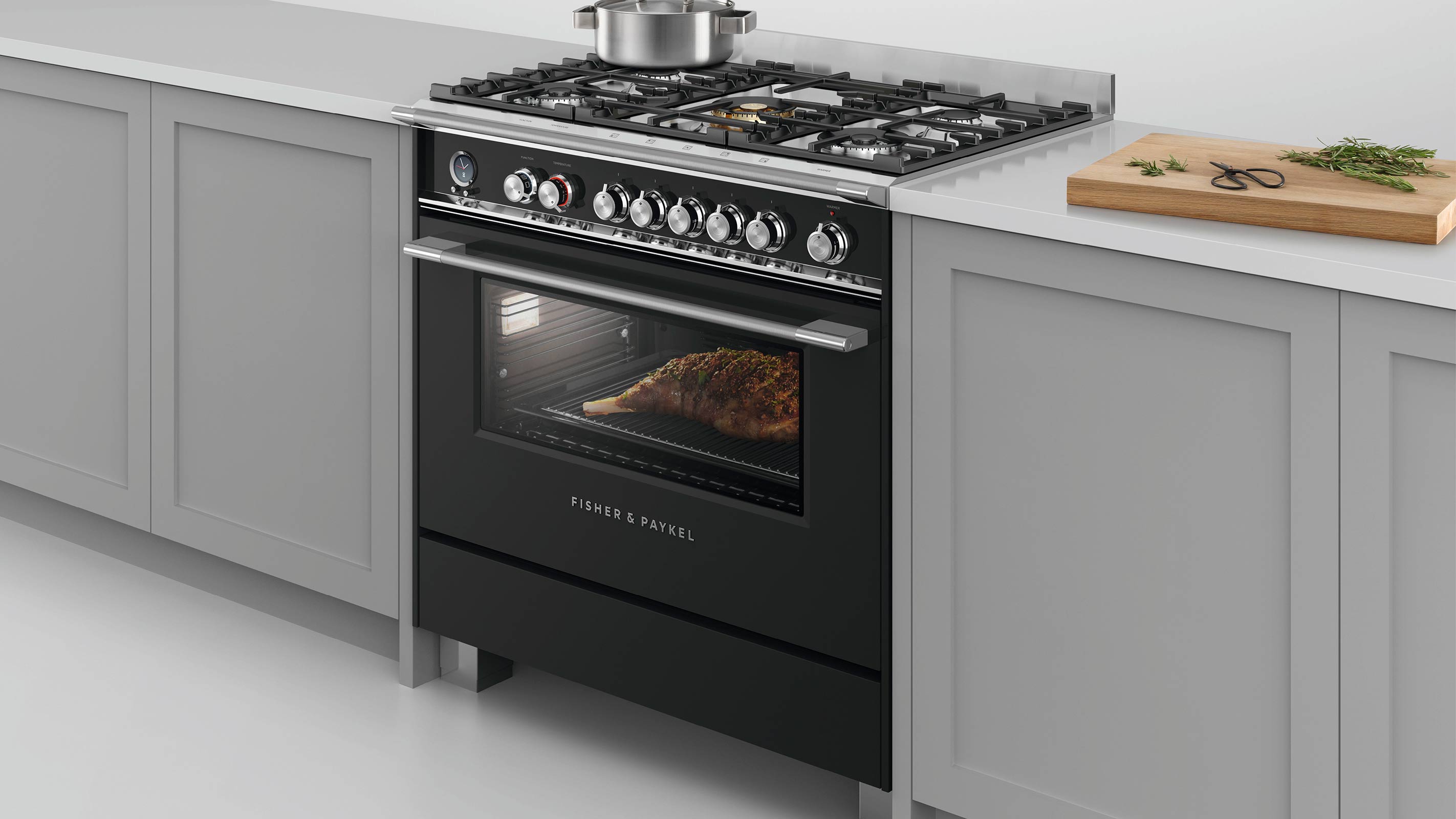
Built-in vs. freestanding cookers: Which is best?
Most cookers (as opposed to ovens) are freestanding, positioned so that the hob is at worktop level, with units on either side. They sit on the floor and some have adjustable feet. This is quite different to built-in ovens.
Built-in ovens can either be fitted at eye-level or under the worktops. Although eye-level built-in ovens fell out of favour for a time, replaced by range cookers or 'built-under' cookers instead, their popularity has returned — and it is easy to see why.
Having your oven positioned at eye-level means no stooping to check on food or to take it in and out. Built-in eye level ovens are designed to slot into kitchen wall units.
"We've noticed a real surge in the built-in market in recent years — perhaps due to the continued popularity for open plan kitchens," say Smeg's experts. "The style and versatility of built-in ovens has come on in leaps and bounds in recent years meaning consumers have far more options when it comes to choosing built-in appliances.
"They are the ideal solution for a majority of styles as they create a sleek and streamlined environment, while freeing up plenty of space to enjoy family meals and entertaining. The most popular configuration options tend to be an oven and microwave combination, but we’ve seen an increase in demand for extras – which are becoming necessities – such as wine coolers and coffee machines."
Freestanding cookers also have their benefits. Not only can they come with you should you decide to move on, but they also come complete with everything you need, including hob. They are simple to fit and often pretty cost-effective too.
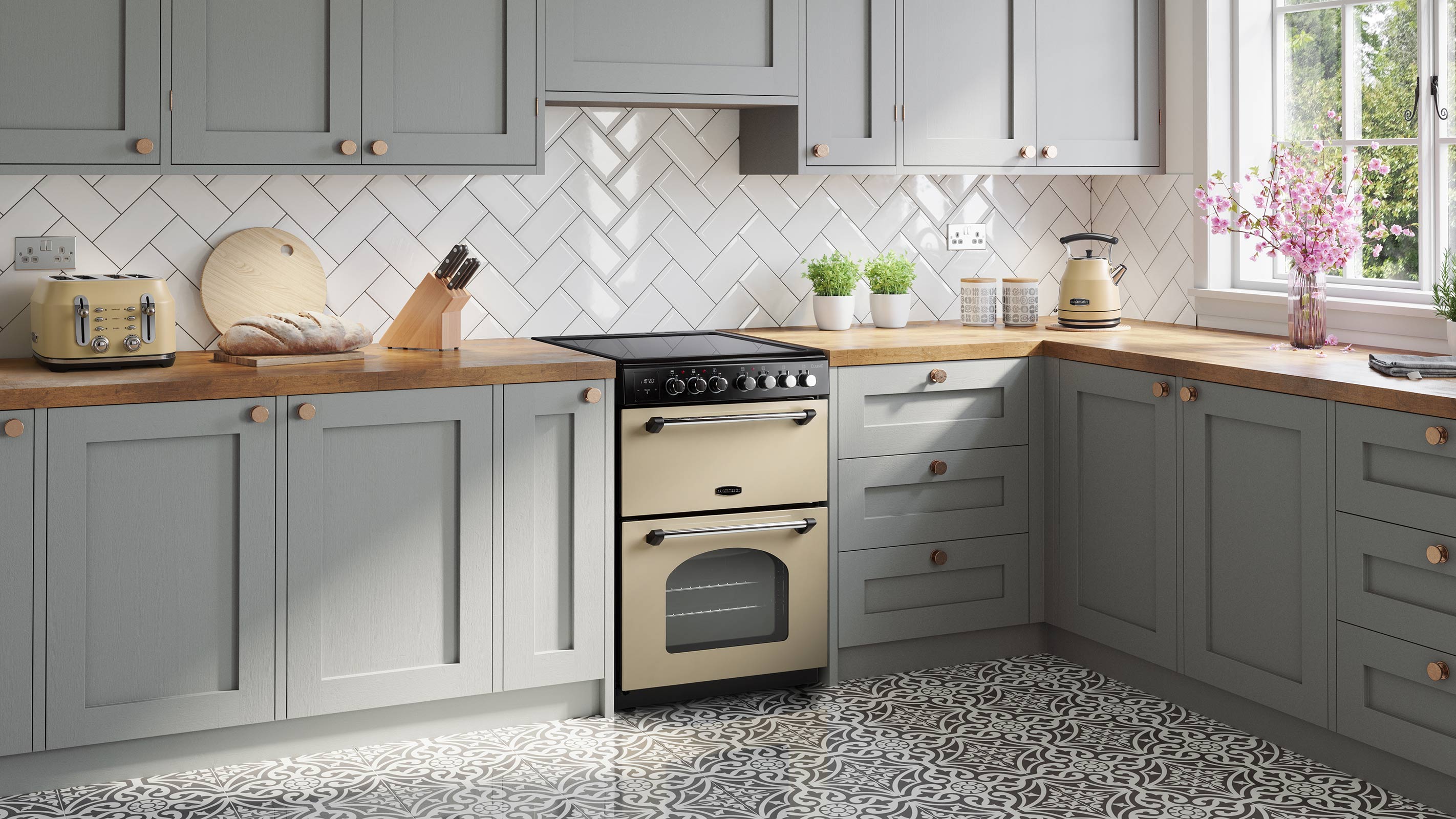
What is a range cooker?
Range cookers are a little different to standard cookers. While conventional cookers tend to consist of a single or double oven and a hob, the best range cookers are usually larger capacity with more ovens and five or more burners (as opposed to the more standard four.)
While many range cookers are larger in size than conventional ovens, there are actually many different size options, from 90cm wide right up to a whopping 220cm. Although there are compact range cookers of 60cm and 70cm in width, they tend to have only have a standard four burners, although some of these come with wok burners in place of one conventional burner.
Although range cookers are often thought of as a more traditional option, there are actually some really striking contemporary models out there too.
Range cookers can be electric, gas or dual fuel.
"Lots of people love the look and style of range cookers — though styles have become more varied in recent years with sleek and sharp models now just as popular as the original 'Aga' style," say Smeg's experts. "The capacity within these ovens is also a big draw for those who have the space in their kitchen. A range cooker makes a real style statement in a large kitchen.
"Most modern range cookers are no more expensive to run than other large modern ovens," they continue. "Most are also duel fuel – or come with a duel fuel option – so could be less expensive to run than a 100% electric oven."
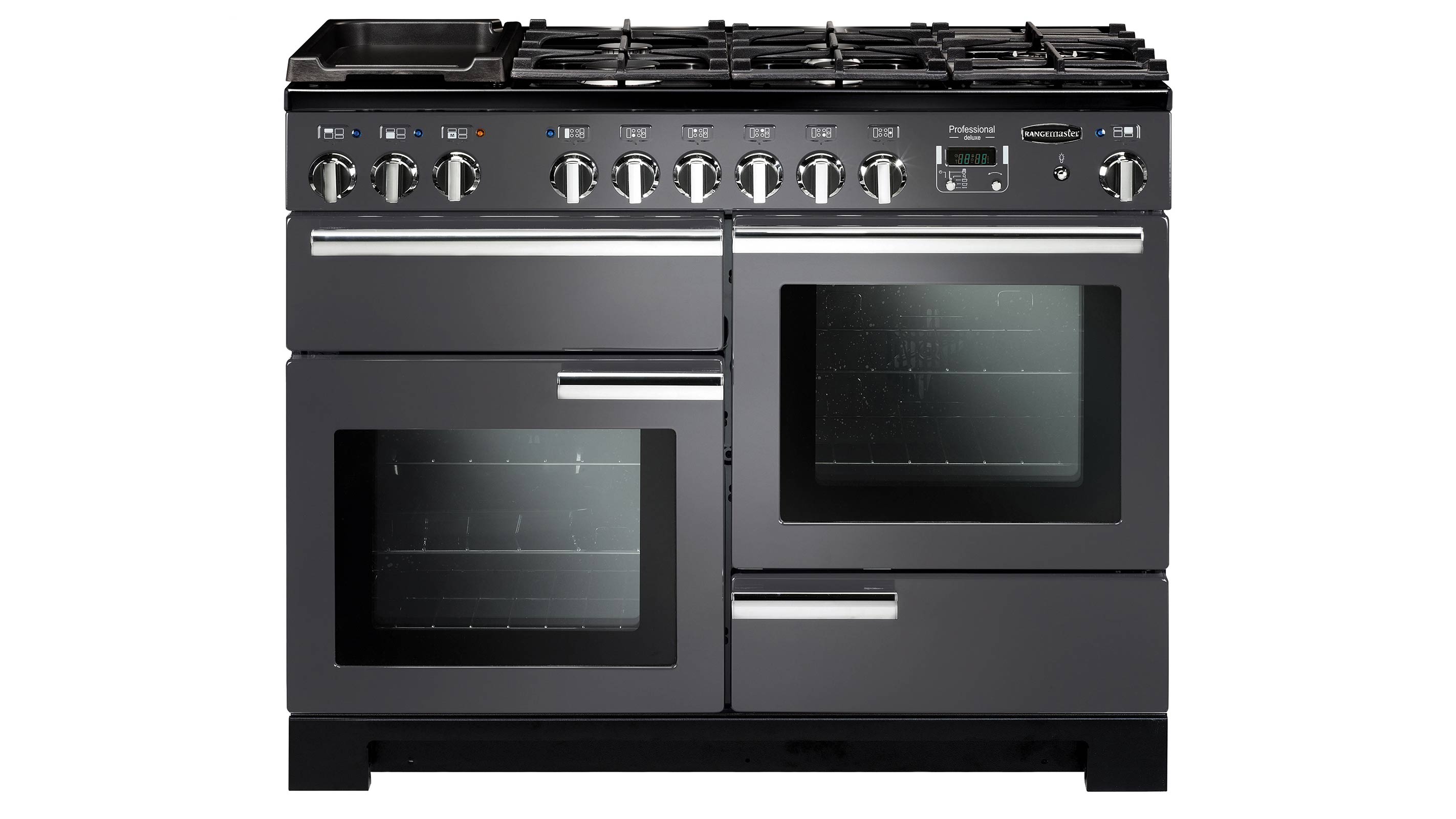
What is the difference between a convection oven and a conventional oven?
When choosing a cooker, don't be confused between conventional ovens and convection ovens — although they look the same, they are actually quite different in the way that they work.
Conventional ovens feature heating elements on the top and bottom of the cooking cavity. Convection ovens – also known as fan ovens – have these elements too but they also have a fan within them that acts to circulate hot air around the oven cavity, meaning an even temperature throughout. Convection ovens avoid the cold or hot spots associated with conventional ovens and are ideal in cavities with multiple racks for cooking lots of different foods at the same time.
Some convection ovens – known as 'true convection' – will also have a third heating element at the rear of the oven. This means foods cook faster as heat is spread evenly around the top, bottom and sides.
"Fan ovens are a great choice for busy lifestyles as they don't require preheating, so your food can be ready in less time," says Luke Shipway, product manager at Caple. "Many foods purchased today let you cook at a lower temperature on fan heat, helping you save energy in comparison to conventional cooking."
Conventional ovens are less popular these days but they still have some advantages and many cookers will feature ovens that give you the option of both.
In conventional ovens, the bottom heating element is the main source of heat while the upper heating element provides intense heat from above, which is great for browning. The centre rack can be used for all kinds of foods, from cakes to casseroles. This type of oven allows you to achieve different results depending on oven rack placement but bear in mind that food may need to be rotated to ensure even cooking.
What is an AGA?
When choosing a cooker many people ask 'what is an AGA?' This type of cooker has now been around for one hundred years and although there have been lots of developments they are still made from cast iron and are a form of heat-storage cooker that use radiant heat to cook food gently, preventing food from drying out.
AGAs are very spacious cookers (although there are now a range of sizes from as small as 60cm), offering various configurations of multi-level ovens along with hot plates on top.
Although they were once designed to be on all the time, there are now models which can be switched on and off as required — AGAs are now all-electric.
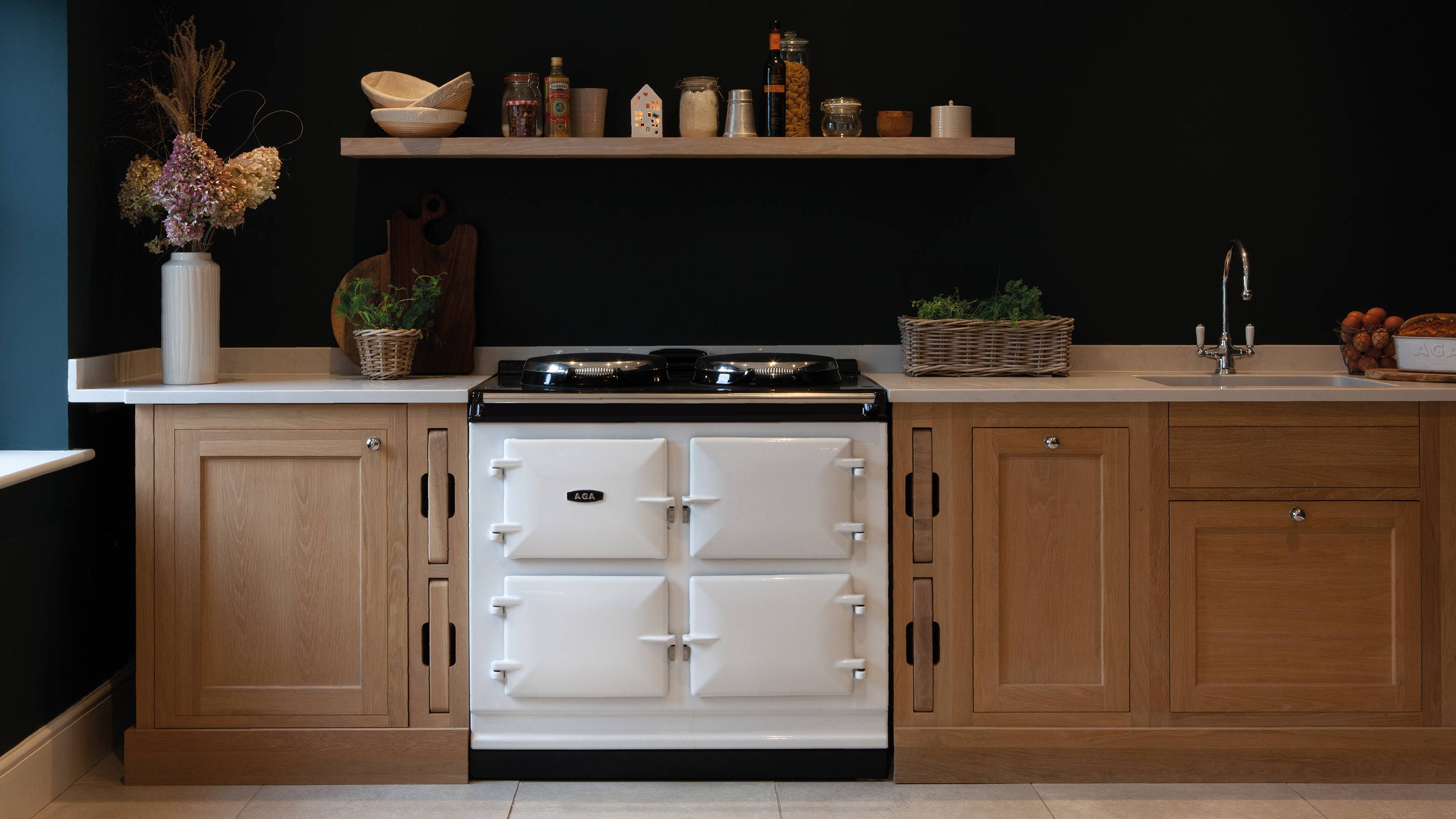
What are steam ovens?
When shopping around for a new cooker, you will probably see the term 'steam oven', but what exactly is a steam oven and why might you want one?
"Steam ovens allow you to cook dishes which are full of flavour, whilst also retaining the nutrients of the ingredients. They also work wonderfully at enhancing the texture of your food and preventing them from drying out," say the experts at Neff. "Steam cooking is also speedier than cooking in a conventional oven, particularly with larger dishes or batch cooking."
"Steam ovens are particularly appealing for those who entertain regularly, as they allow you to cook a wide selection of dishes simultaneously — from fish and vegetables to meringues, without flavour transfer," says Smeg.
Steam ovens use steam as opposed to hot air to cook food, boiling water in built-in reservoirs to produce the steam, before it is injected into the oven cavity and circulated around the food. Many models require no need special plumbing for this steam as they come with refillable water containers.
Although steam ovens are most often thought of as being built-in, there are also freestanding cookers with steam functions — such as the Zanussi ZCV69360BA 60cm Electric Cooker with Ceramic Hob from ao.com.
What are multifunction ovens?
Multifunction ovens, also known as combi ovens, actually make a lot of sense. A multifunction oven will usually allow you to cook either conventionally or with a fan, might have a defrost option, allow you to slow cook or even have 'fast cook' options. They are ideal if you have limited space for a cooker with multiple ovens.
"Combi ovens are a great way to enjoy healthy, flavourful meals without spending too much time in the kitchen as they allow you to heat, defrost, steam and even grill with one appliance," say Caple's experts. "So, whether you're cooking a big dinner, need to reheat leftovers, or even make separate meals for fussy kids who want to try something different, a combi oven is a perfect choice. They use less energy and generate less heat than a regular oven, they make a great choice for apartments or small kitchens."
What special features is it worth looking out for?
What can make the process of choosing a new cooker even more confusing is the sheer number of 'special features' on offer. For this reason it is worth familiarising yourself with what they are and whether there are worth having:
- Pyrolytic ovens: We've all heard of them, but just what is a pyrolytic oven? Basically, these are self-cleaning ovens — many cookers now come with a pyrolytic function. When activated the pyrolytic program produces high temperatures of up to 485ºC to turn food residue and grease into ash that, once the oven has cooled, can simply be wiped away.
- Touch controls: Opting for touch displays on your cooker means fewer places for dirt to become lodged.
- Smart cookers: These comes with all kinds of technology designed to make life run smoother. Many smart cookers have Bluetooth connectivity that means you can connect them to an app and control the timers from your phone or another device to remotely manage cooking times.
- Telescopic sliders: Although most cookers now come with these as standard, do check that the one you are interested is one of them — they make it easier and safer to slide food in and out of the oven.
Get the Homebuilding & Renovating Newsletter
Bring your dream home to life with expert advice, how to guides and design inspiration. Sign up for our newsletter and get two free tickets to a Homebuilding & Renovating Show near you.
Natasha was Homebuilding & Renovating’s Associate Content Editor and was a member of the Homebuilding team for over two decades. In her role on Homebuilding & Renovating she imparted her knowledge on a wide range of renovation topics, from window condensation to renovating bathrooms, to removing walls and adding an extension. She continues to write for Homebuilding on these topics, and more. An experienced journalist and renovation expert, she also writes for a number of other homes titles, including Homes & Gardens and Ideal Homes. Over the years Natasha has renovated and carried out a side extension to a Victorian terrace. She is currently living in the rural Edwardian cottage she renovated and extended on a largely DIY basis, living on site for the duration of the project.

